Science correspondent, BBC News
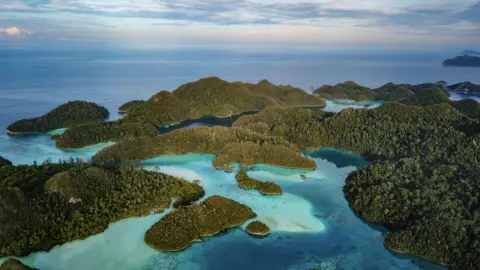 Global Witness
Global WitnessStark images, captured from a drone by environmental campaigners and shared with the BBC, appear to show how nickel mining has stripped forests and polluted waters in one of the most biodiverse marine habitats on Earth.
The Raja Ampat archipelago – a group of small islands in Indonesia’s Southwest Papua Province – has been dubbed the “Amazon of the Seas”.
But mining for nickel – an ingredient in electric vehicle batteries and in stainless steel – has ramped up there in recent years, according to the organisation Global Witness.
In a move that was welcomed by campaigners, the Indonesian government this week revoked permits for four out of five mining companies operating in the region.
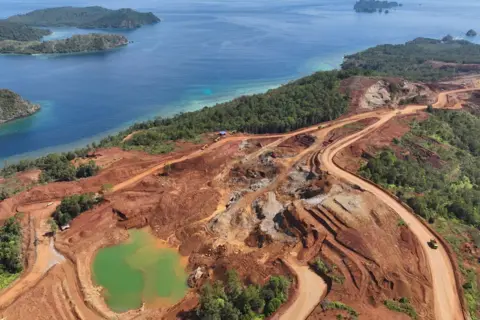 Global Witness
Global WitnessIn a statement published online, Indonesia’s Ministry for the Environment said: “Raja Ampat’s biodiversity is a world heritage that must be protected.
“We pay great attention to mining activities that occur in the area.”
But photographs – taken by Global Witness as part of an investigation – appear to show environmental damage already done.
Aerial images show forest loss and sediment run-off into waters that are home to biodiverse coral reefs.
Global Witness told the BBC that land use for mining, across multiple small islands in the archipelago, increased by 500 hectares – equivalent to about 700 football pitches – between 2020 and 2024.
 Global Witness
Global WitnessSome conservationists, including the organisation Greenpeace, are concerned that the government’s decision could be reversed by legal action by the mining companies.
And one company that operates on Gag island, which has particularly rich deposits of nickel, has been allowed to continue its operations. The government said it would order the “restoration of the ecological impacts that occur” there.
Coral reef conservationist and ecologist Dr Mark Erdmann told BBC News that he was “blown away, and so happy” about the government’s decision to revoke the mining permits.
“This is the global epicenter of marine biodiversity,” he told BBC News.
Dr Erdmann has worked in Raja Ampat for more than two decades and helped set up the network of marine protected areas there. He is one of the founders of a shark rewilding project, called Reshark, based in the region.
He added: “It was a voice of outrage from the Indonesian people that made the government pay attention.”
But this ecological controversy is an example of how the demand for the metals needed to power battery technology – for electric cars and other low carbon energy sources – can damage the environment.
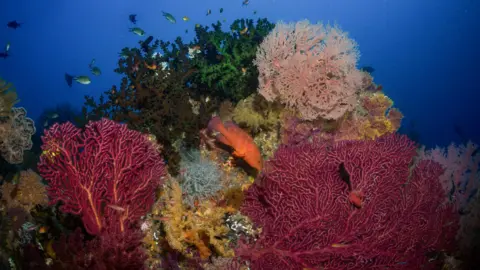 Global Witness
Global WitnessIndonesia now accounts for more than half of the world’s nickel mine production, according to a report last year by the Institute for Energy Economics and Financial Analysis.
And while the beauty and biodiversity of the Raja Ampat has drawn attention to mining activity there, mining has been linked to ecological damage elsewhere too.
A 2024 study by Forest Watch Indonesia found a link between the loss of forests associated with mining activity and increased local flooding and landslides.
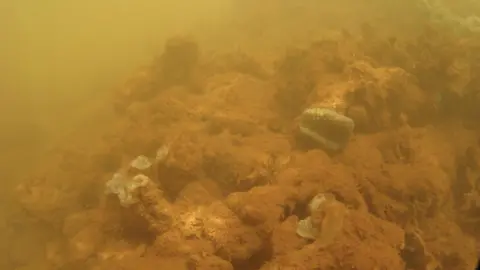 Global Witness
Global WitnessIncreasing demand for so-called critical minerals is shaping economic decisions around the world. It was the driving force for President Trump’s recent executive order to jumpstart the mining of metallic nodules from the deep sea in international waters. It is a move that China has called illegal.
Dr Erdmann pointed out that balancing economic growth with environmental protection was a particular dilemma for Indonesia. “It has a lot of nickel – one way or the other, some of it’s going to come out of the ground,” he said.
Dr Michaela Guo Ying Lo, from the Durrell Institute of Conservation and Ecology (Dice) and the University of Kent, led a study in 2024 of the impact of mining on local communities in Sulawesi. The large Indonesian island has most of the country’s nickel deposits.
The research showed that mining activity reduced poverty slightly, but that there was significant “worsening of environmental well-being” including increased local water and air pollution.
“Indonesia is positioning itself globally in the nickel market,” Dr Lo told BBC News. “But it’s important not to forget what’s happening locally.”
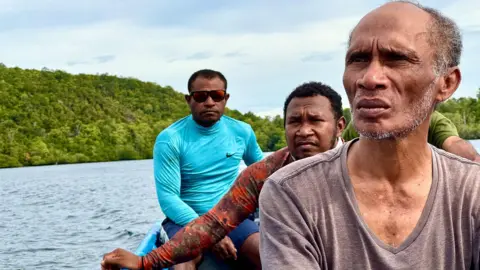 Global Witness
Global WitnessImam Shofwan, an environmental campaigner from an organisation called Jatam, based in Jakarta, told BBC News: “They say nickel is a solution to the climate crisis. But it’s causing deforestation and destroying farmland.”
He also pointed out to the BBC that low-lying coastal areas, where some nickel deposits are found, are some of the places most vulnerable to the effects of climate change, including rising sea levels.
Dr Erdmann commented: “The nickel dilemma is a horrible one.
“Mining is always going to be environmentally impactful and we all tend to think that electrification is a good idea. But what is the acceptable damage that we’re willing to see?”
The BBC contacted the Indonesian government for comment, but did not receive a reply.
 Global Witness
Global Witness








